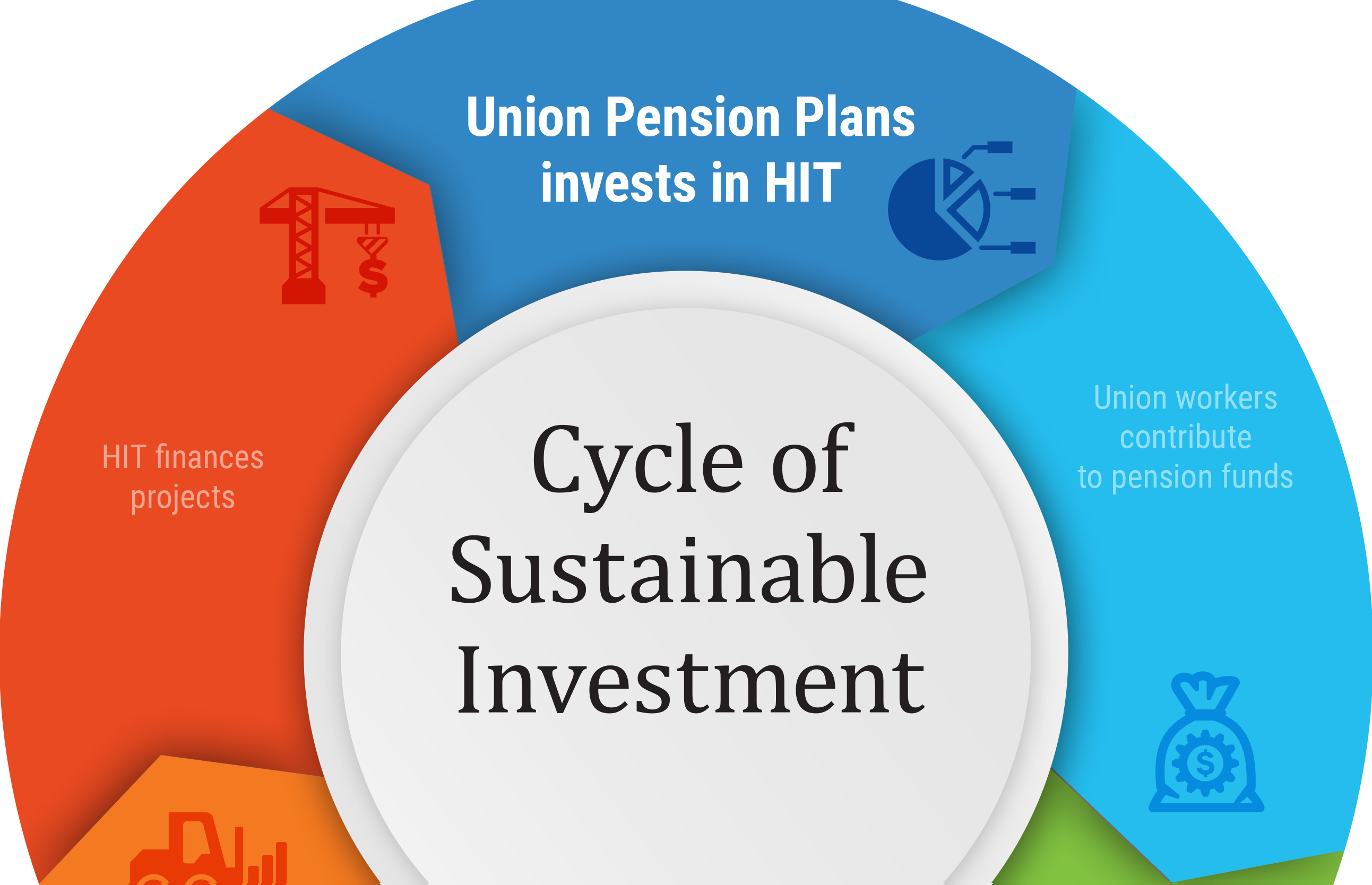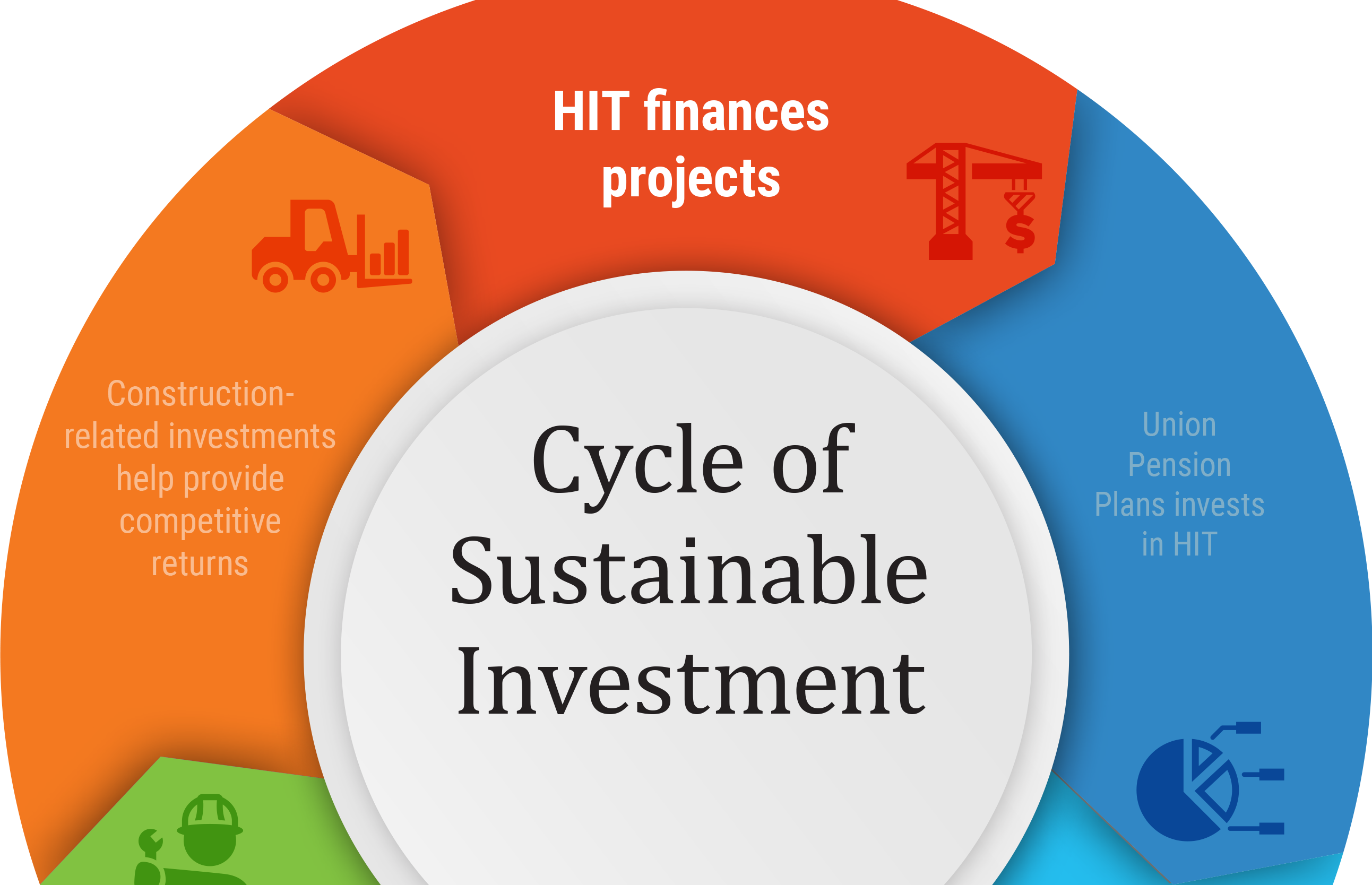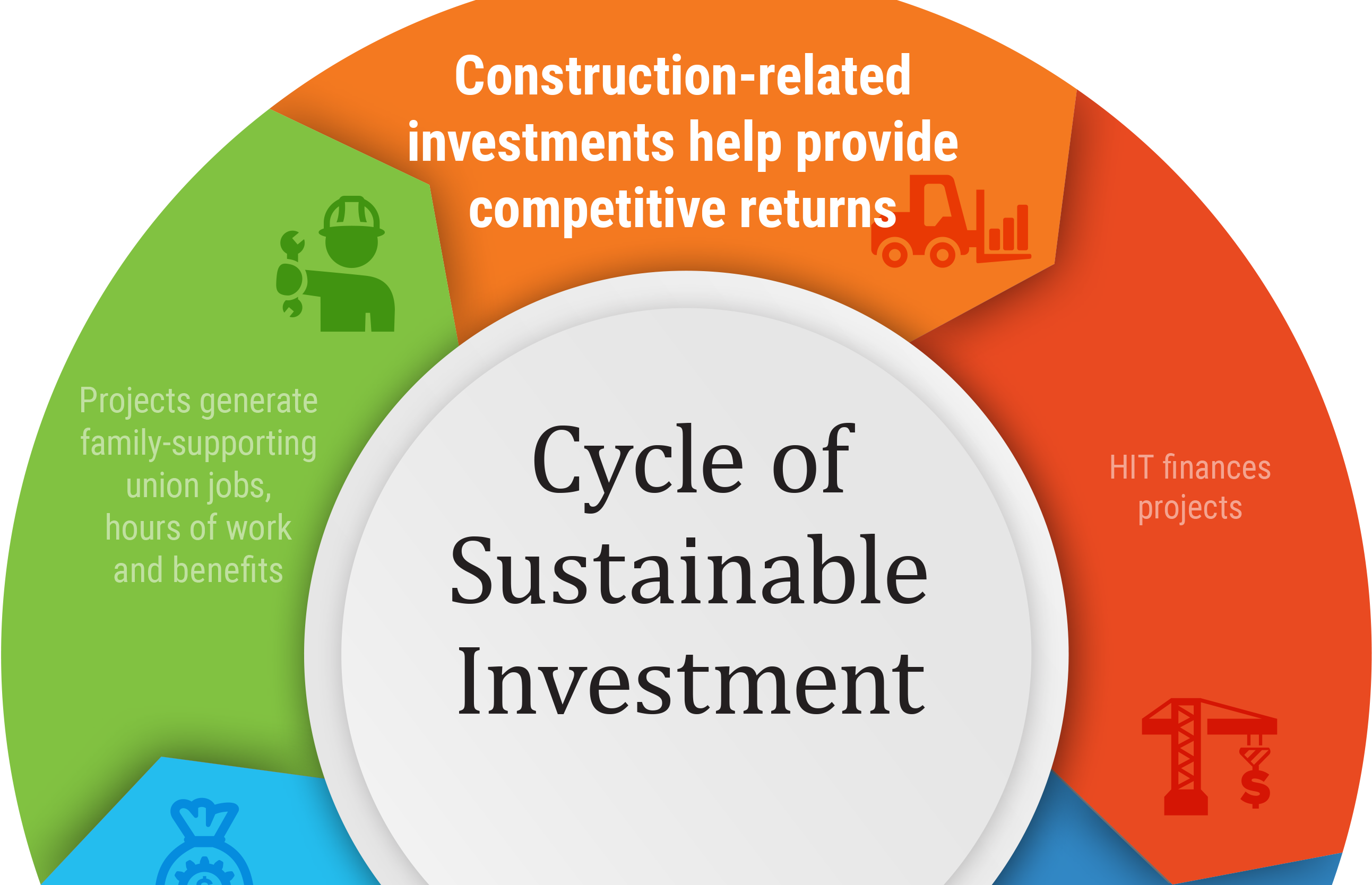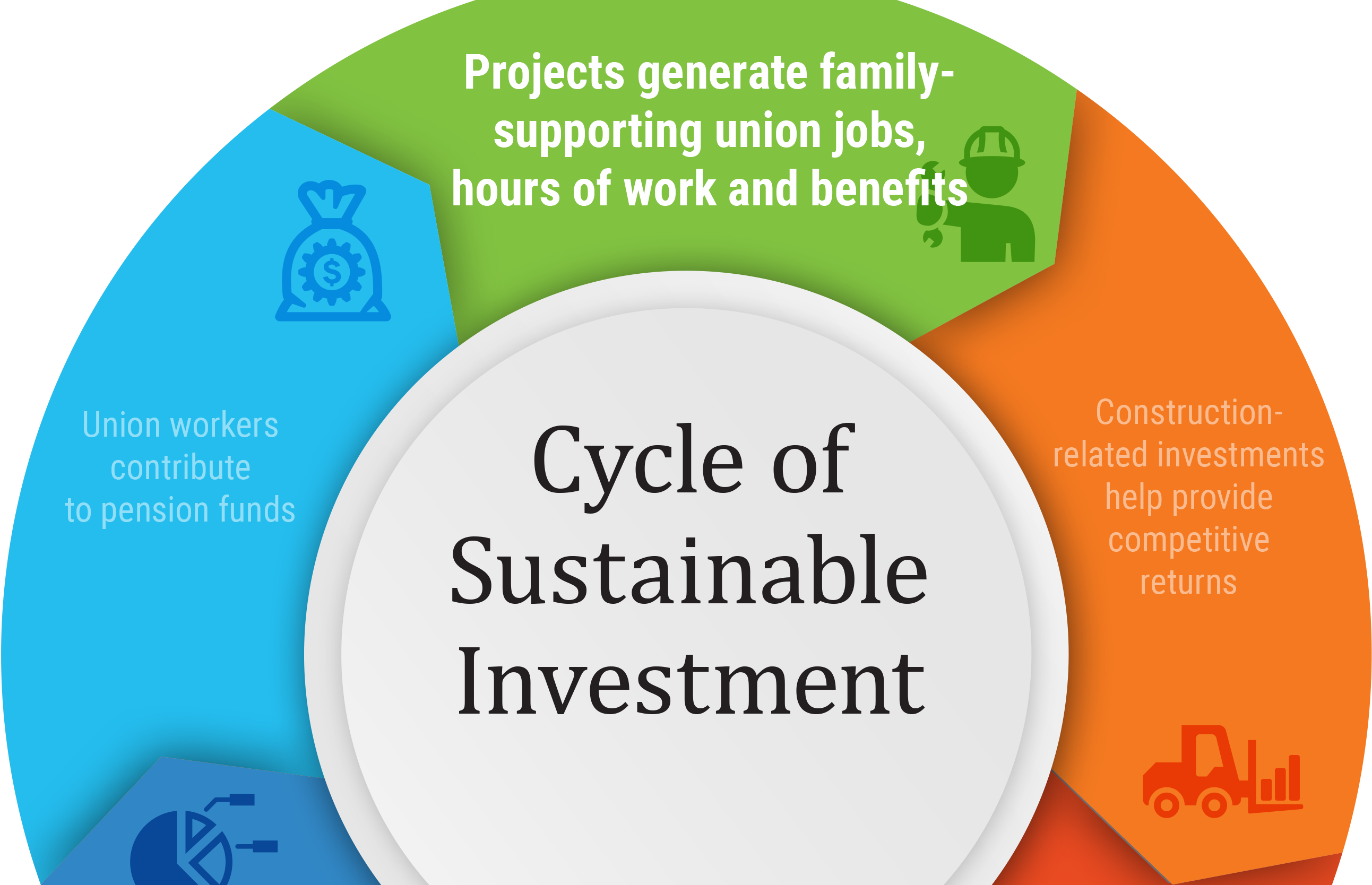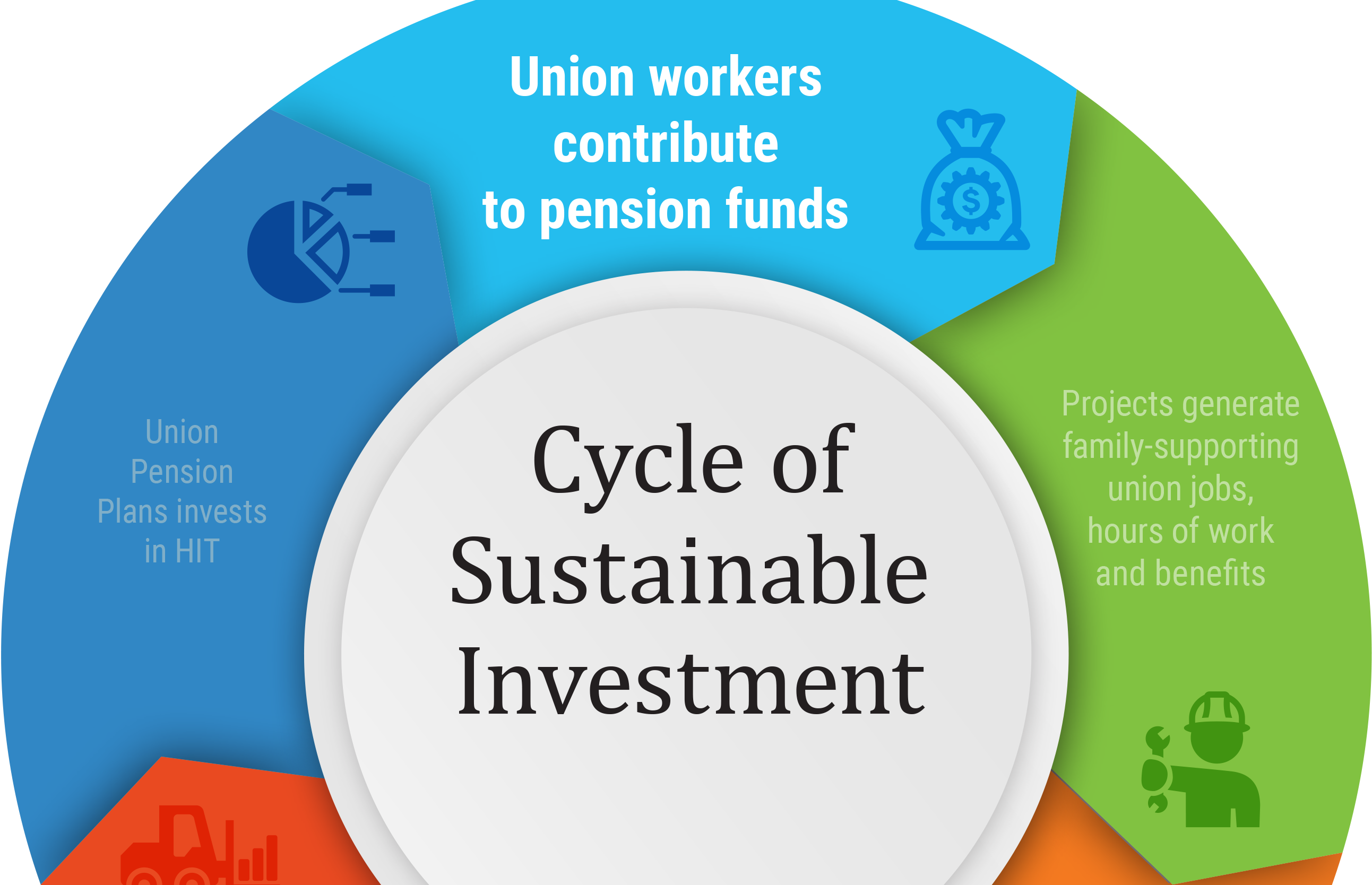Impact Investing
With a nearly 40-year track record, the HIT is a leader in impact investing. The HIT has a successful history as a fixed income impact investor incorporating Environmental, Social, and Governance (ESG) into its investment strategy. The HIT is committed to putting union capital to work in investments that produce competitive returns—its primary objective—while, at the same time, creating quality union construction jobs while building affordable and workforce housing.
The HIT’s investments also provide broader economic benefits that improve the lives of working people and their communities and support environmentally responsible investing. This cycle of sustainable investment is reinforcing—strengthening pension plans, the livelihood of union members and the communities in which they live and work.
| ESG Policy |  |
NATIONWIDE ECONOMIC IMPACT OF INVESTMENTS
(1984-present)
-
Projects
-
hours of on-site union construction work created
-
housing and healthcare units nationwide, with 67% affordable housing
-
in personal income including wages and benefits, with $10.1 billion for construction workers
-
in tax revenues ($2.0 billion state/local and $4.2 billion federal)
-
in total economic benefits
-
total jobs generated across communities
Job and economic impact figures are estimates calculated using IMPLAN, an input-output model, based on HIT and HIT subsidiary Building America CDE, Inc. project data. Data is current as of March 31, 2024. Economic impact data is in 2023 dollars and all other figures are nominal.
Impact Stories
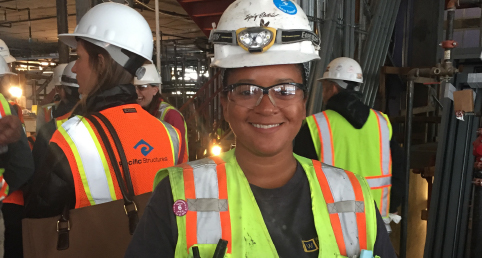
Union Job Creation
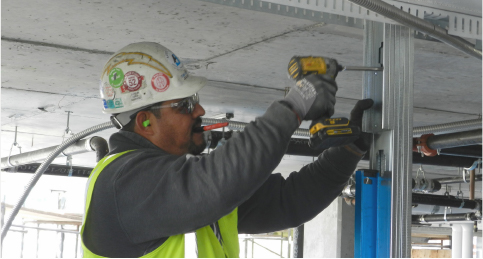
Affordable Housing
Union Job Creation: Elizabeth Seton, Yonkers, NY
About
The Elizabeth Seton Pediatric Center was established more than 30 years ago by the Sisters of Charity to provide skilled nursing care to medically fragile children from birth to age 21. After being located in Manhattan for years, the Center relocated to Yonkers in 2010 to a newly built state-of-the-art facility. In 2012 it again expanded, tripling the number of long-term ventilator beds it offered. The facility is one of only five stand-alone, pediatric skilled-care nursing facilities in the State of New York.
Impact
The HIT invested $100 million for the construction of the new facility in 2010 and an additional $18.3 million for the two-story expansion in 2016. The two phases generated nearly 1.8 million hours of work for the men and women of the building and construction trades unions. In addition, as a skilled nursing facility, the Elizabeth Seton Center also is covered by a Collective Bargaining Agreement with 1199 SEIU United Healthcare Workers East. The expansion resulted in the Center hiring more than 100 additional employees.
The facility was awarded a LEED Gold Certification.
Affordable Housing: Old Colony, Boston, MA
About
The Anne M. Lynch Homes at Old Colony in South Boston was originally built in 1940 and is one of the oldest federal public housing developments in the country. Prior to its revitalization it was one of the Boston Housing Authority’s most distressed property. The 845-unit development, which sits on 15 acres near the South Boston waterfront, is being redeveloped in phases. Originally developed as housing for defense workers, the project was not geared towards housing children or seniors.
Now in its third phase of redevelopment, the HIT has begun the transformation of this project which now includes a community center, delivering on its promise to create a family-focused neighborhood.
Impact
Public redevelopment is a specialty of the HIT. Specifically, the HIT and the Boston Housing Authority have enjoyed a partnership which has financed nearly a dozen public housing transformation projects in its history. At Old Colony, the HIT has participated in the financing of all three phases to date, transforming the community with 380 new units of housing, all 100% affordable.
Through the BHA’s Project Labor Agreement with the Building & Construction Trades Council of the Metropolitan District, 100% of the on-site construction jobs are union. The Building Pathways program, a partnership between the Building Trades and the BHA, provides housing authority residents access to job opportunities in the trades on BHA’s redevelopment projects and other job sites around the City.
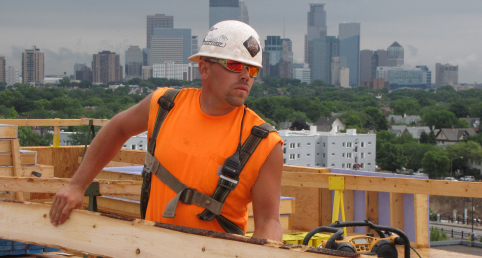
Green Building
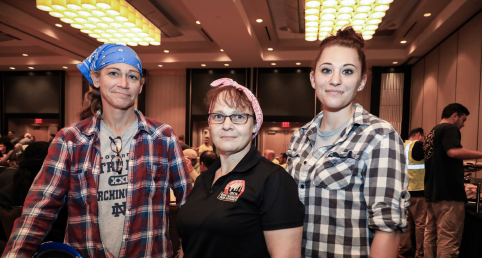
Preserving Labor Assets
Green Building: Elevate at Southwest Station, Eden Prairie, MN
About
Elevate at Southwest Station, features 222 units of both affordable and market-rate housing, more than 13,000 square feet of restaurant and retail space, a fitness center and rooftop pool, and an underground parking garage. Elevate is also located adjacent to the Southwest Transit Center, where a Metro Green Line light rail extension is being constructed that will offer direct access to downtown Minneapolis.
Impact
Elevate at Southwest Station will offer both affordable and market-rate housing in the suburbs of the Twin Cities, with easy access to public transportation. The development has been designed as environmentally sustainable, and includes a green roof and a rainwater collection system. The project will create 269 union construction jobs, and approximately 670 jobs across all industries.
Preserving Labor Assets: Casa del Pueblo, San Jose, CA
About
The Casa del Pueblo apartments were built in 1976 and are located in the Central Business District of San Jose, California. The 165 units of housing are all affordable to families earning between 30 and 60 percent of Area Median Income. The 12-story building provides affordable housing in close proximity to key community services. All of the residents are 62 years of age or older. The HIT invested $25 million to help renovate the property to modern standards.
Impact
The apartments are adjacent to the headquarters of the United Food and Commercial Workers Local 5 and are also owned by the union. With a large number of union-owned properties around the country, many of which contain affordable housing, the HIT has provided technical assistance to many labor-sponsored entities and projects through its history, aiding the owners in navigating how to preserve, renovate and finance their properties to keep them affordable to their residents and community.
At Casa del Pueblo, HIT worked with the borrower and the financing team to bring the project to fruition, improving a labor-owned asset, benefitting the elderly residents who make Casa del Pueblo their home, and preserving affordable housing units in a high-cost area. The project was renovated with 100% union labor and created an estimated 513,285 hours of union construction work.
Key Markets
Community Investment Initiatives
The HIT has taken a strategic approach to its investment sourcing, often identifying key markets where it intends to focus its investment sourcing activities and have a meaningful impact in particular communities. HIT’s initiatives seek to take advantage of its staff’s demonstrated ability to network with community-based housing groups, labor organizations, developers and sponsors, mortgage bankers, local government officials, and housing finance agencies to generate housing and community development.
